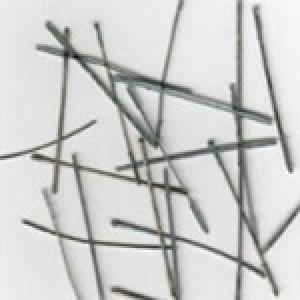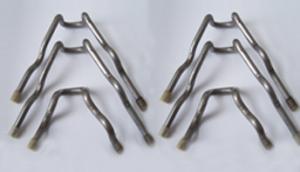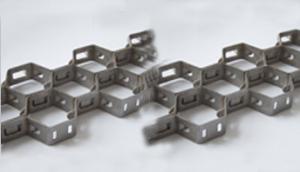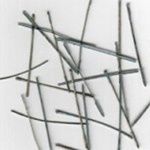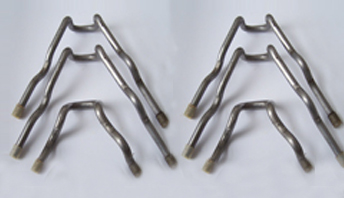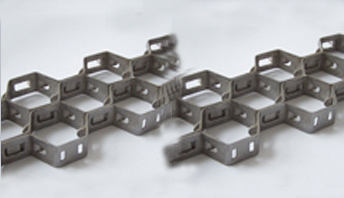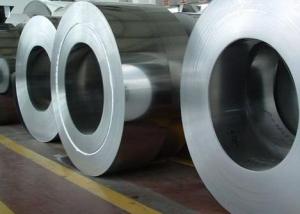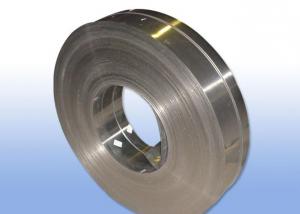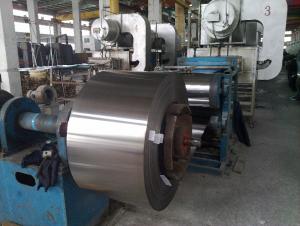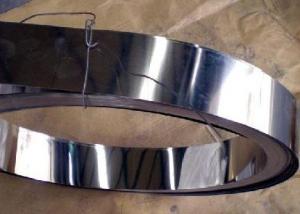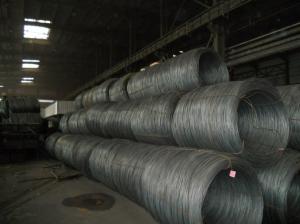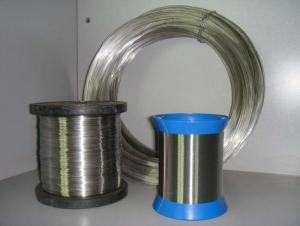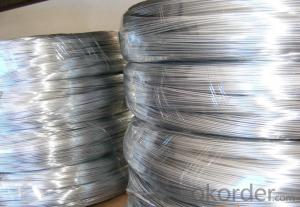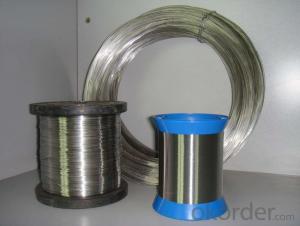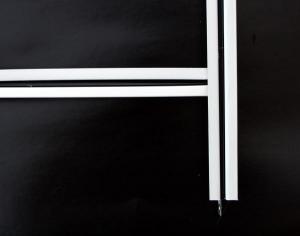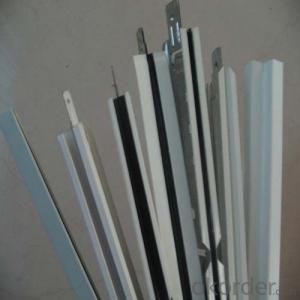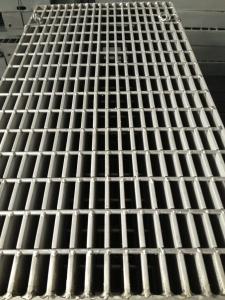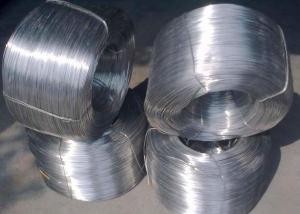Steel Grid
- Loading Port:
- China Main Port
- Payment Terms:
- TT OR LC
- Min Order Qty:
- -
- Supply Capability:
- -
OKorder Service Pledge
Quality Product, Order Online Tracking, Timely Delivery
OKorder Financial Service
Credit Rating, Credit Services, Credit Purchasing
You Might Also Like
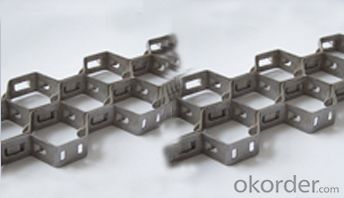 |
- Q: How is stainless steel wire different from galvanized wire?
- Stainless steel wire and galvanized wire are two distinct types of wire, each with its own unique properties and characteristics. The key differences between stainless steel wire and galvanized wire lie in their composition, corrosion resistance, and applications. Composition: Stainless steel wire is made from an alloy of steel, chromium, and sometimes other elements like nickel or molybdenum. This composition gives stainless steel wire its exceptional strength, durability, and resistance to corrosion. On the other hand, galvanized wire is made from carbon steel wire that is coated with a layer of zinc. This zinc coating provides galvanized wire with protection against rust and corrosion. Corrosion Resistance: Stainless steel wire is highly resistant to corrosion, making it suitable for various outdoor applications and harsh environments. It can withstand exposure to moisture, chemicals, and extreme temperatures without losing its integrity. Galvanized wire, although it offers some corrosion resistance due to its zinc coating, is not as resistant as stainless steel wire. Over time, the zinc coating may wear off, leaving the underlying steel susceptible to rust and corrosion. Applications: Due to its superior corrosion resistance and strength, stainless steel wire is commonly used in industries such as construction, marine, automotive, and aerospace. It is utilized for applications that require high durability, such as fencing, springs, cables, and wires used in surgical instruments or food processing equipment. Galvanized wire, on the other hand, is often used in applications where corrosion resistance is not the primary concern, such as wire mesh, binding or tying material, or in the construction of fences and cages. In summary, stainless steel wire and galvanized wire differ significantly in terms of their composition, corrosion resistance, and applications. While stainless steel wire is known for its exceptional strength and resistance to corrosion, galvanized wire offers some corrosion resistance but is not as durable or long-lasting as stainless steel wire. The choice between these two wires depends on the specific requirements of the intended application.
- Q: What are the different types of coatings available for stainless steel wire?
- There are several different types of coatings available for stainless steel wire, each offering unique benefits and applications. 1. PVC Coating: PVC (Polyvinyl Chloride) coating is a popular choice for stainless steel wire as it provides excellent corrosion resistance, insulation, and abrasion resistance. It is commonly used in applications where the wire needs to be protected from harsh environmental conditions or where electrical insulation is required. 2. Nylon Coating: Nylon coating is another commonly used option for stainless steel wire. It offers good abrasion resistance, flexibility, and impact resistance. Nylon coating is often used in applications that require high strength and durability, such as wire ropes or cables used in lifting and hoisting operations. 3. Epoxy Coating: Epoxy coating provides excellent chemical resistance and durability. It is typically used in applications where the wire will be exposed to corrosive environments or chemicals. Epoxy-coated stainless steel wire is commonly used in the chemical industry, oil and gas industry, and marine applications. 4. Polyester Coating: Polyester coating offers good resistance to UV rays, weathering, and chemical exposure. It is often used in outdoor applications where the wire needs to withstand harsh weather conditions or prolonged exposure to sunlight. Polyester-coated stainless steel wire is commonly used in fencing, agriculture, and construction industries. 5. PTFE Coating: PTFE (Polytetrafluoroethylene) coating, also known as Teflon coating, provides excellent non-stick properties, low friction, and high temperature resistance. It is commonly used in applications where the wire needs to be resistant to heat, chemicals, or stickiness, such as in food processing, pharmaceutical, or electrical industries. These are just a few examples of the different types of coatings available for stainless steel wire. The choice of coating depends on the specific requirements of the application, including factors like corrosion resistance, insulation, flexibility, chemical resistance, and temperature resistance.
- Q: What are the different diameter options available for stainless steel wire?
- Stainless steel wire is available in a wide range of diameter options to suit various applications. The diameter options typically vary from as small as 0.001 inches (0.0254 mm) to as large as 0.375 inches (9.525 mm) or even more. The specific diameter options available for stainless steel wire depend on the specific grade and type of stainless steel being used. Commonly, stainless steel wire is available in diameters ranging from 0.001 inches (0.0254 mm) to 0.625 inches (15.875 mm). However, it is important to note that certain specialty grades or custom orders may offer even smaller or larger diameter options. The choice of diameter depends on the intended application of the stainless steel wire. Thinner diameter wires are often used in applications where flexibility and ease of handling are important, such as in the manufacturing of medical devices, jewelry, or fine mesh screens. Thicker diameter wires, on the other hand, are typically used in applications that require high strength and durability, such as in structural components, springs, or heavy-duty fencing. It is recommended to consult with a stainless steel wire supplier or manufacturer to determine the specific diameter options available for a particular grade or type of stainless steel wire. They can provide guidance based on the intended application and requirements, ensuring that the chosen diameter will meet the needs of the project.
- Q: What are the different types of stainless steel wire weaving patterns?
- There are several different types of stainless steel wire weaving patterns that are commonly used in various industries and applications. Some of the most popular patterns include: 1. Plain Weave: This is the simplest and most common type of weave pattern. It consists of a simple over-and-under interlocking of wires, resulting in a uniform appearance. Plain weave is versatile and can be used for a wide range of applications. 2. Twill Weave: Twill weave patterns have a diagonal appearance due to the staggered interlocking of wires. This pattern offers increased strength and stability compared to plain weave. Twill weave is often used in applications that require high tensile strength and durability. 3. Dutch Weave: Dutch weave patterns have a tighter and more closely spaced weave compared to plain or twill weaves. It is created by using a thicker warp wire and a thinner weft wire. Dutch weave is ideal for applications where fine filtration and high mechanical strength are required. 4. Five-Heddle Weave: This pattern is specifically designed to provide a high level of filtration efficiency. It consists of four warp wires and one weft wire, resulting in a dense and tight weave. Five-heddle weave is commonly used in industries such as oil and gas, petrochemical, and pharmaceuticals. 5. Reverse Dutch Weave: Reverse Dutch weave is similar to Dutch weave, but with reversed wire positions. This pattern has a finer mesh count and higher stability, making it suitable for applications that require excellent filtration and high flow rates. 6. Welded Wire Mesh: In this pattern, the wires are spot welded at their intersections, creating a strong and rigid mesh. Welded wire mesh is commonly used in construction, fencing, and industrial applications where strength and security are essential. These are just a few examples of the different types of stainless steel wire weaving patterns available. Each pattern has its own unique characteristics and is chosen based on the specific requirements of the application, such as strength, filtration, or aesthetics.
- Q: Transparent stainless steel wire soft tube DN25 mean what does it mean?
- The development of steel tube production technology began with the rise of bicycle manufacturing industry, 19In the early 20th century oil development, during the two world war ships, boilers, aircraft manufacturing, manufacturing of power boiler after the Second World War, the development of chemical industry of petroleum and natural gas drilling and transportation etc., are promoted in yield and quality varieties, the development of steel tube industry.
- Q: Can stainless steel wire be used for hanging signs or banners?
- Yes, stainless steel wire can be used for hanging signs or banners. Stainless steel wire is known for its strength and durability, making it a suitable choice for hanging heavy objects such as signs or banners. Additionally, stainless steel wire is resistant to corrosion, ensuring that it will not rust and deteriorate over time. It is also flexible, allowing for easy installation and adjustment. Overall, stainless steel wire is a reliable and long-lasting option for hanging signs or banners.
- Q: Is stainless steel wire suitable for outdoor signage?
- Yes, stainless steel wire is suitable for outdoor signage. Stainless steel is known for its durability and resistance to corrosion, making it an ideal choice for outdoor applications. It can withstand various weather conditions, including rain, snow, and sunlight, without rusting or deteriorating. Additionally, stainless steel wire is strong and can support the weight of signage, ensuring that it remains securely in place. Its sleek and modern appearance also adds an aesthetic appeal to outdoor signage. Overall, stainless steel wire is a reliable and long-lasting option for outdoor signage.
- Q: Can stainless steel wire be used for musical instrument strings?
- Yes, stainless steel wire can be used for musical instrument strings. It is commonly used for guitar strings, providing a bright and crisp tone. However, it may not be suitable for all instruments as different materials can produce different sounds and tonal qualities.
- Q: What are the specifications of stainless steel wire?
- 316 and 317 stainless steel (see below the performance of 317 stainless steel) is a stainless steel containing molybdenum. The molybdenum content in 317 stainless steel with 316 stainless steel. Due to a little of molybdenum in steel, the steel overall performance is better than 310 and 304 stainless steel, high temperature, when the concentration of sulfuric acid is less than 15% and more than 85%, 316 stainless steel has been widely used. 316 stainless steel also has good resistance to chloride corrosion, so it is often used in marine environments. The maximum carbon content of 316L stainless steel is 0.03, which can be used in welding and can not be annealed and requires maximum corrosion resistance
- Q: Is stainless steel wire easy to clean?
- Yes, stainless steel wire is relatively easy to clean. Due to its non-porous surface, it is resistant to staining and corrosion, making it less likely to accumulate dirt, grime, or debris. Simply wiping the stainless steel wire with a damp cloth or using mild soap and water should be sufficient to remove any surface dirt. For tougher stains or grease, a non-abrasive cleaner can be used. Additionally, stainless steel wire is often used in applications where hygiene is crucial, such as in the food industry, as it can be easily sanitized with steam, hot water, or even specialized cleaning agents.
Send your message to us
Steel Grid
- Loading Port:
- China Main Port
- Payment Terms:
- TT OR LC
- Min Order Qty:
- -
- Supply Capability:
- -
OKorder Service Pledge
Quality Product, Order Online Tracking, Timely Delivery
OKorder Financial Service
Credit Rating, Credit Services, Credit Purchasing
Similar products
Hot products
Hot Searches
Related keywords
